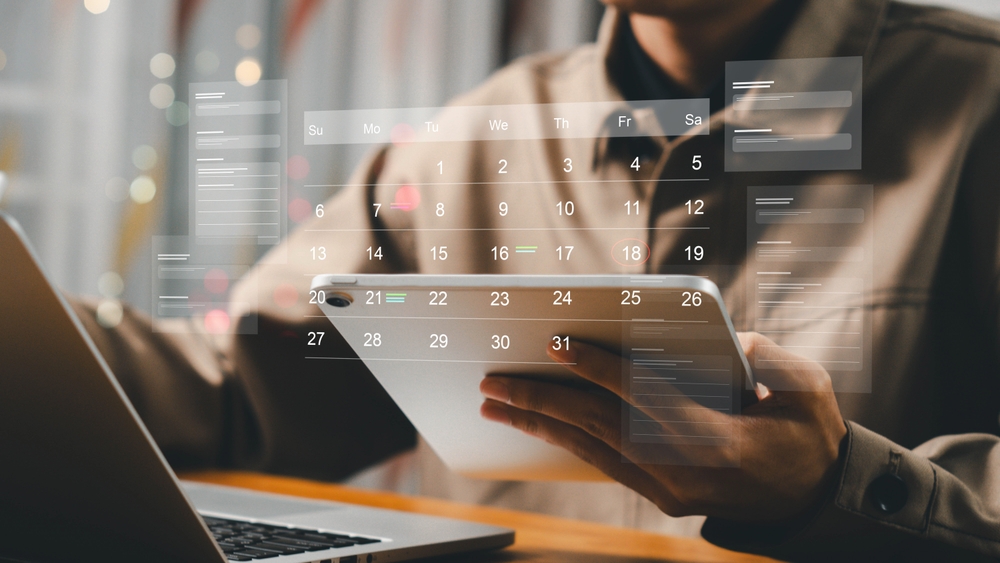Automation is leveling the playing field among organizations big and small, giving everyone access to affordable and cutting-edge marketing, sales, supply chain, and strategy tools. But, that doesn’t mean your workforce is maximizing its potential.
These innovations may cut bottom line costs, but don’t always boost efficiency. In fact, many times, automation casts a glaring light on what isn’t working in people-based processes and gets discarded because of it. When introducing any automated process improvements, it’s important to also prepare your teams with resources and education and to allow for implementation and feedback periods to allow for your teams to adapt, adjust, and alter their operations.
With that in mind, let’s explore how some common tools and distractions may be causing a decline in productivity around your workplace. Read on for a short list of this century’s top productivity zappers.
1. MEETINGS
Meetings make a lot of sense on paper. Gathering people with a shared work goal together, and creating a plan to manage workflow, share ideas, and get stuff done — what’s not to like? But, in practice, meetings too often devolve into major time sucks, no matter what your industry.
The kicker? We’ve known this to be the case for quite some time. Studies show that there are approximately 11 million meetings a year in America, and that a whopping $37 billion is wasted every year due to unproductive ones.
The Covid-19 pandemic proved we can work remotely as a dispersed workforce and still keep businesses running despite major challenges. One of the number one reasons? Virtual meeting spaces. No matter your platform preference, chances are you experienced one if not hundreds of virtual meetings over the course of the pandemic period of social distancing and stay-at-home guidance. From tele-health to remote work, virtual meetings have become required.
A benefit to businesses? They’re effective for getting work done, but they aren’t places where people want to hang out and chat. And, they allow people to join from wherever they are from whatever device they have access to at the time. People tend to come to them more prepared and ready to engage. It can be easier to stay on topic and now that workers have grown accustomed to them, they know what to expect. Plus, there’s a proliferation of great resources for hosting, planning, and getting the most out of virtual meetings available online.
So, while the number of meetings may not be going away anytime soon, as businesses return to in-person operations, virtual or hybrid virtual/in-person meetings will likely continue, boosting efficiency along with them.
Next, and as always, whatever the meeting format, make sure staff know to come prepared. Set the expectation that your team should spend time preparing for meetings and time afterward collecting and accomplishing any action items they were assigned. Encourage staff members to gather all the data before they gather all the people, and things should feel much more productive. Finally, always establish a clear action plan before closing any meeting.
2. OPEN OFFICE FLOOR PLANS
While open floor plans increase the appearance of transparency and egalitarianism in the workplace, there’s ample proof at this point that they’re a productivity nightmare. Research makes clear that workers prefer privacy and focus while at work, and that the structure of open offices makes interruption the norm, not the exception.
Luckily, there’s a quick fix: just setting up physical dividers as makeshift cubicles can reduce the whopping 86 minutes of productivity lost each day to open concept offices. Your team can also try explicit methods of time management to emphasize focus, like the Pomodoro technique. This rigorous approach to staying on task encourages employees to politely let their coworkers know that they are at work on a task, and will get back to them later.
3. MESSAGING APPS
Successful employee collaboration boosts both morale and productivity, making apps like Slack seem like the magic bullet for fun and purposeful workplace interaction. After all, the use of office-friendly messaging tools is a fantastic way to source quick answers and engage in other forms of rapid communication.
However, the immediacy of instant messaging can make every cat meme or emoji seem pressing, turning them into distractions instead of opportunities for collaborative bonding at work. This can lead to anxiety as deadlines creep closer and productivity slumps.
The point isn’t to constantly monitor what messages are being sent between employees. It’s to encourage them to remember that everyone is working toward the same goal and that workplace communications should, for the most part, be focused on that goal. Sending the same cat meme by email won’t seem nearly as urgent or be nearly as distracting as sending it through instant message.
Studies show that “participants interrupted during a cognitive task [experienced] two times the number of errors, two times the feeling of anxiety, and [needed] three to 27 percent more time to complete the tasks” Interruptions, even small ones, can create anxiety and disrupt workflow, causing employee stress and lost productivity.
Encourage your team to only use messaging apps for real time, deadline-focused projects needing an immediate response, and save other forms of workplace communication for email or for an appropriate time.
4. USE OF PERSONAL TECH AT WORK
Let’s face it, the unofficial slogan of the 21st century workplace might as well be “A Smartphone in Every Hand.” And, for the most part, the use of personal technology has been a boon for employees and employers looking to embrace more mobility and flexibility in the office. But with greater technology comes greater responsibility, and poorly managed tech offerings can end up eating away at worker morale, productivity, and even security.
In fact, according to one survey cited by Business News Daily, only 40% of employees surveyed said that their personal devices were properly integrated with their work technology. The problem: when employees start taking ad hoc approaches to using their personal phones for work purposes, the result is often a distracting mix of alerts, calls, and emails into their daily workflow (not to mention potentially compromised business data).
The takeaway? Examine your current protocols for personal technology in the office, then consider whether you have the budget to equip everyone with work-only devices to better realize a force of truly mobile, focused workers.
5. CONVOLUTED WORKPLACE RULES
This last productivity destroyer won’t come as a surprise to anyone. Personal social media accounts and internet usage on the clock account for a huge amount of lost productivity on the job everyday. It can be difficult for an employer to navigate how to manage an employee’s access to their own social media and/or monitor internet usage.
It’s important for employees to feel trusted on the job and also connected to the larger world. A quick update on a sick loved one seen on Facebook might boost productivity as opposed to squash it. So what do you do? Help employees plan for breaks that include checking in on their social media accounts. Acknowledge that sometimes it’s necessary to answer a personal call or check in on social media for an update or just for a brain break.
It’s all about balance. As long as productivity is sustained and employees are fulfilled, then priorities are in line.
Do you have tips for increasing productivity in the workplace? Share them on our Facebook and Twitter feeds!




